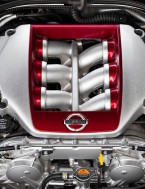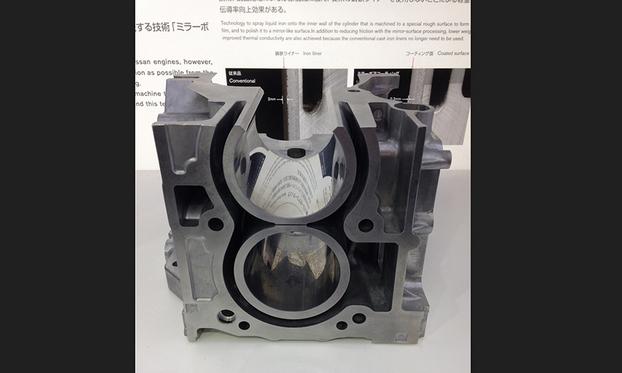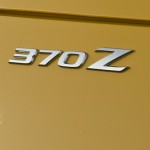
For most non-luxury car engines, each of its cylinder bores needs a cast iron liner to resist the heat and friction generated by the moving piston rings; on some luxury car and sports car, composite material spray (a.k.a thermal spray) techniques are used. For example Nissan GT-R’s engine, the inside the aluminum bore surface is treated with a layer of spraying molten iron, therefore no liner is required, which saves weight and provides better heat conduction.
Because the sprayed metal layer is extremely smooth, it raises energy efficiency by reducing the friction inside the engine. However, the benefit comes with cost. Due to the reason that this manufacturing process is labor-intensive, previously it is only utilized for racing cars or luxury cars.
But engineers from Nissan have made break through progress recently, which lower the cost of the iron spray coating significantly. They named this technology to be “Mirror Bore Coating”, because after the sprayed coating, the inside of the bore surface is so smooth that it is like a mirror that reflects lights, please see the below photo.
According to Nissan, this technology can be employed in mass-produced engines without increasing production cost.
For more in-depth knowledge about the thermal spray coating technology, please refer to this document (from Sulzer Ltd). Please pay attention to page 8, it mentioned “One Japanese customer purchased customized
SUMEBore equipment and is coating a new V6 aluminum outboard engine“. Since in the recent years there is very few Japanese V6 engines that have utilized such cylinder bore coating technologies, I suspect what Sulzer means here is the Nissan GT-R’s turbo V6 engine.





Recent Comments